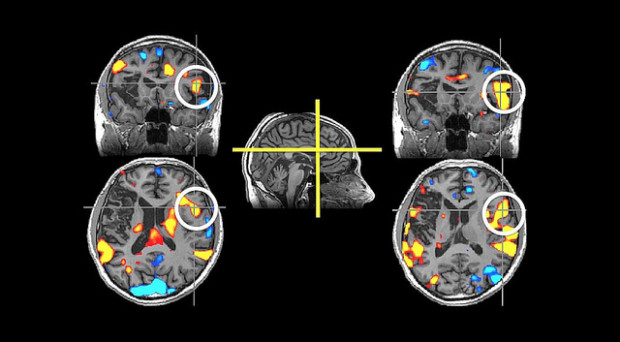
May 2016 is a time for all things purple, as the Stroke Association’s annual Action on Stroke Month is upon us. Stroke can happen to anyone at any time, with around 152,000 incidences every year in the UK alone. But it’s not all doom and gloom; researchers around the world are working tirelessly to improve chances of survival and improve sufferers’ quality of life.
Think F.A.S.T.
It is estimated that one in eight strokes are fatal within the first 30 days, so rapid treatment is essential. We’ve all heard about the Act F.A.S.T. campaign, which tells us how to react if someone is having a stroke. A stroke can be truly devastating, with around half of all stroke survivors left with a life-long disability. This means it is important to act quickly in order to limit the damage caused as much as possible.
Around half of all stroke survivors are left with a life-long disability
One of most common early treatments given is thrombolytic, also known as ‘Clot Busting’. The third international stroke trial (IST-3), the world’s largest study looking at the benefits of the clot busting drug rt-PA, showed improved functional outcomes for patients if treatment was administered within six hours of stroke onset.
However, many patients are often not able to receive this treatment as the six-hour treatment window has closed by the time they have been assessed. The PASTA trial is a novel study looking at the feasibility of a paramedic performing an enhanced stroke assessment in order to reduce the time from admission to brain imaging and thrombolysis for appropriate stroke patients.
Blessing in disguise?
A transient ischemic attack (TIA) – often referred to as a “mini stroke” – is caused by a temporary disruption to the blood supply to the brain. Unlike a full ischemic stroke, the symptoms are temporary, lasting for less than 24 hours (although usually a lot less).
Suffering a TIA is by no means a pleasant experience, but they can warn of worse to come and their rapid identification can play a key role in stroke prevention. Following a TIA, the risk of having a subsequent stroke increases exponentially, especially if the symptoms of the TIA are particularly severe. Rapid assessment is therefore a crucial part of stroke prevention as it could mean the difference between starting treatment and making a full recovery, and going on to have a full stroke which could be disabling.
Several studies investigate the input of non-specialist medical personnel initiating measures for stroke prevention in order to save time
Several studies investigate the input of non-specialist medical personnel initiating measures for stroke prevention in order to save time. The current NICE guidelines recommend 300mg aspirin daily should immediately be prescribed while a patient awaits specialist treatment. For example, the RAPID−TIA study published in Trials and also registered in ISRCTN looks at the possibility of GPs and emergency department doctors prescribing extra medications, such as statins, to TIA patients for stroke prevention.
The TIER trial is a Welsh study looking at a novel model of care for suspected TIA patients attended by paramedics. It aims to investigate the feasibility of rapid referral to a TIA clinic for specialist review without attending the emergency department, in a view to ensure rapid treatment and a reduction of stroke risk.
Prediction and prevention
Atherosclerosis of the carotid and vertebral arteries in the neck is a major cause of ischemic stroke and TIA. As we age, plaque accumulates on the walls of these arteries – a process which is exacerbated by smoking, obesity and high blood pressure – leading to a narrowing of the arteries (stenosis). If the arteries become too narrowed, blood clots may form, especially if the plaque has a particularly uneven surface. These clots can either lead to a blockage in the artery (thrombosis) or can dislodge because of high velocity blood flow, blocking in arteries closer to the brain (embolism).

Detecting stenosis in the carotid arteries can be a good indicator for stroke risk and so when someone has had a TIA, they often undergo a carotid ultrasound scan in order to detect any significant stenosis (a reduction in diameter of more than 50%). If this is found, prompt treatment could help to prevent a person from having a stroke, and potentially save their life.
Prompt treatment of TIA patients could help to prevent a person from having a stroke, and potentially save their life
The Stroke Research Group, led by Professor Martin Brown, is conducting an array of research into innovative treatments for the prevention of stroke. The recently completed International Carotid Stenting Study (ICSS) investigated whether carotid angioplasty and stenting (in which the blockage is flattened by a balloon and held in place using a mesh tube called a stent) had the same beneficial effects in stroke prevention as the more-invasive carotid endarterectomy procedure (a surgical procedure involving the removal of the inner lining of the artery where the plaque is formed). The study showed that both of these procedures showed considerable benefit in stroke prevention in the long-term – great news for those who are not suitable for an endarterectomy.
Stenosis in the carotid arteries is not the only kind we should be thinking about however. A recent study protocol rightly points out that stenosis in the vertebral arteries (the other major arteries in the neck) is also a leading cause of ischemic stroke. The Dutch study looks at the safety and feasibility of stenting vertebral arteries as a means of stroke prevention.
Atherosclerosis is by no means the only risk factor for stroke. A number of studies recently registered in ISRCTN also examine the link between atrial fibrillation (AF) and stroke. For example, the Left Atrial Appendage Occlusion Study III investigates whether a technique that involves blocking off the left atrial appendage (a structure in the muscle wall of the left atrium thought to be a common source of blood clots causing stroke in patients with AF) could help reduce stroke occurrence.
One step at a time
Stroke is one of the leading causes of disability in adults
Stroke is one of the leading causes of disability in adults, with many suffering from long-term complications affecting mobility, balance, speech and cognitive function. The most common complications observed are upper and lower limb paralysis (hemiplegia) or weakness (hemiparesis), usually on one side of the body, and affect more than 70% of stroke survivors.
Regaining mobility and independence is one of the biggest hurdles encountered by stroke survivors, and there is a huge amount of research looking to improve current rehabilitation practices. There are a wide range of studies registered in ISRCTN looking at new and innovative physical therapy interventions to help stroke survivors to regain their mobility and independence. This study looks at the use of mirror box therapy in the improvement of lower limb dexterity following stroke.
Regaining mobility and independence is one of the biggest hurdles encountered by stroke survivors
Another study is investigating the timing of rehabilitation in patients with upper limb weakness, looking at whether completing intensive arm exercises earlier can have a beneficial effect on regaining arm movement.
A particularly fast-growing area in stroke rehabilitation research is the use robotics. For example, the TEST-TRACS study, published in the Journal of NeuroEngineering and Rehabilitation looks at the implications robotics can have in the rehabilitation of stroke patients with hand/arm weakness.
Summing up
From Winston Churchill to Cilla Black, stroke is the second most common cause of death in the world, with an estimated 6.7 million deaths worldwide in 2012. Despite receiving more attention in recent years, stroke research is still dramatically underfunded, especially when compared with the socioeconomic burden of the disease. So whatever you’re doing to make your May purple, take a moment to consider the research being undertaken to try and make this world stroke-free.
Comments